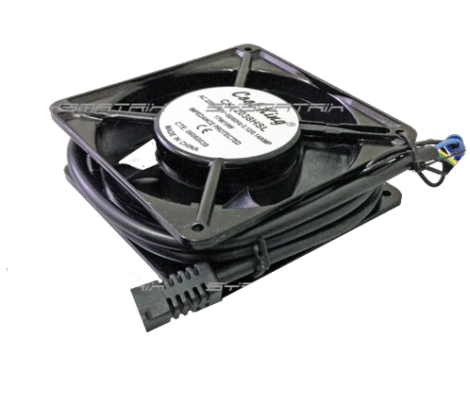IT equipment emits much heat when performing complicated tasks such as data processing. If a cooling strategy is developed incorrectly, servers tend to overheat, which leads to their malfunction and break. Thus, it’s vital to ensure a stable proper climate in data centers for an entire network system. Answering the question “How cool should a server room be”, note that an average temperature is set between 73 and 75 degrees Fahrenheit.
The maintenance of the proper environment, temperature in particular, allows for guaranteeing smooth and durable operation, prolonging hardware service life, and preventing malfunction and downtime. Thus, every specialist must know how to cool server room.
The Essence of Cooling Technology
The main principle of DC cooling implies the replacement of hot air with cooler air. By moving cold air to overheated areas forcedly, excess heat is removed. The following practices are used to keep the required climate:
- The use of outside natural air and bringing it inside the premises via vents and creating an uninterruptible airflow circulation. This method comes as a cost-effective and sustainable way to cool down DCs since the natural airflow from the environment is used without the need to attract energy and other resources. This method is known as free cooling and is applicable in colder areas only.
- Recycling the inner climate and the creation of a closed system of air circulation. In this case, hot and cold aisles are used to create a highly effective system and maximize ventilation productivity. It is the most common way how to cool a data center.
- Liquid cooling technology implies designing a closed circle, where the liquid is used to remove excess heat from server racks. Such facilities are usually placed next to large reservoirs, where large volumes of water are available. Due to special devices, the liquid is forced to circulate uninterruptedly. Cooled liquid enters the data center, absorbs heat, and removes it, after which it is cooled outside. And the circle repeats.
Here, you know how data center cooling works. Below, let’s list what devices and systems are used to arrange proper cooling. The following solutions are the most popular:
- Temperature control panel with fans. These are solid panels with fans integrated into them. By using this solution, system administrators can replace rack bodies and improve air penetrability. Fans speed up natural air circulation and force it to move quickly.
- Shelf fan trays. These are complexes of fans used to direct the airflow in large premises and cabinets. Sets of fans are used to maximize airflow circulation and minimize the use of alternative methods.
- Wall-mount and roof fan kit. This is a set of tools to mount fans to walls or the roof of a server rack, enhancing circulation and saving space for equipment installation.
If you need these or other tools for a server rack cooling system, here at https://sysracks.com/catalog/rack-accessories/cooling-accessories/, you’ll find a wide variety of solutions for any case. Sysracks comes as a trusted distributor of certified products for data centers. Managers are competent and help pick the needed products.
Other Tips for Enhancing Cooling Efficiency
Besides designing a well-functioning cooling system, some other aspects of data center arrangement do matter. It’s good if you know the explanation of “How are servers cooled”. However, other tricks can pump your system. Below, we list the key practices that help improve cooling efficiency without implementing extra measures:
- Rack Placement. By finding the best place to install your server rack, you can either prevent overheating or speed up hardware failure. For example, placing racks close to heating vents is a bad solution. Find the coolest place in the premise, where humidity and temperature are stable, and no risk of floating exists.
- Cable Organization. Tangled wires impede air circulation and cause problems with cooling. Thus, keep cables neat and bundled. Multiple accessories are available on the market for arranging cords in bundles. These are zips, ties, organizers, etc.
- Environmental monitoring sensors. Make sure to install sensors that will control the inner climate and alarm in the case of indicator breaches. The use of sensors allows for reacting to hazards promptly.
- Proper hardware allocation. Accommodation of devices in racks does matter. Devices emit heat and can exchange it, influencing each other. If the layout is developed improperly (components are placed too tightly or incorrectly), this can lead to increased equipment wear and failure in performance.
- Inner climate isolation. The creation of a proper environment inside racks is an important task since external factors can disturb the climate, which causes hardware functioning. Thus, equipment must be isolated. Use blank panels and other accessories to prevent the interaction and exchange of inside and outside airflows. Blank panels are plastic pieces used to plug in unused slots in racks via which the air can penetrate the enclosure.
Server systems and DCs require sufficient cooling to operate properly and durably. Thus, the industry offers multiple techniques for effective cooling. There are liquid and air strategies for air conditioning. Methods feature different operation circles, power consumption, and operational capacities. Thus, it’s possible to pick a suitable strategy for each system. We hope that you get our explanation of the question “How does data center cooling work” and are able to select the needed technology for your case.


